I have to tell you about my new favourite stamp publication.
It's almost 100 years old. And I'm absolutely hooked.
It's 'The Jamaica Philatelist'. The journal of the Jamaican Philatelic Society, first published in June 1927.
That may sound like an odd choice. (And to be fair, it probably is.)
But I love history, as I'm sure many of us do, and reading through the old articles and adverts feels like travelling back in time.
They're full of the small delightful details which are invaluable when you're studying a specific area.
And let's face it, we're stamp collectors. We love the small details!
I do also have a good reason for jumping down this rabbit hole.
I've been researching today's featured item.
It's an important Commonwealth rarity of the King George V era.
And one of the jewels of West Indies philately.
A famous (and controversial) rarity.
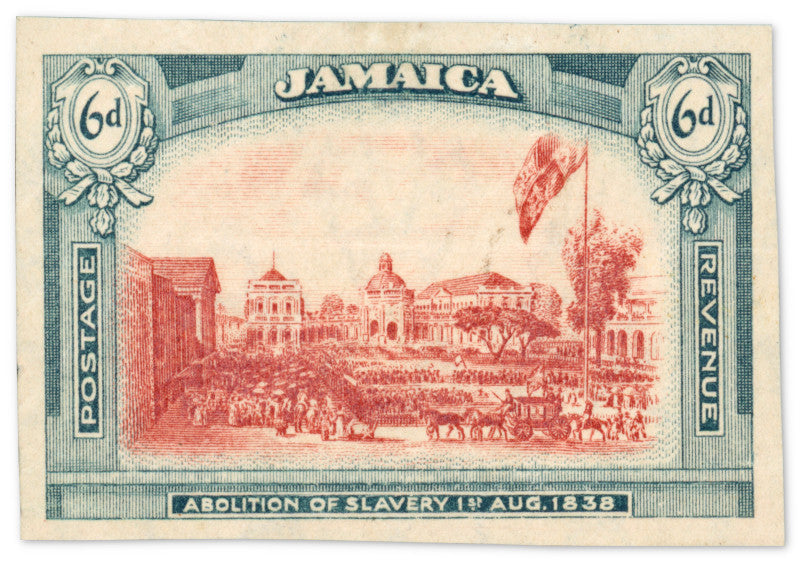 The finest example of just three original De La Rue plate proofs in existence.
The finest example of just three original De La Rue plate proofs in existence.
It's regarded as one of Jamaica's most iconic stamps, which is quite an achievement – as it was never actually issued.
It was banned by the Jamaican government for political reasons, and (almost) every example was destroyed.
The item I'm offering you today is an original imperforate plate proof of this very famous stamp.
There are just three in existence.
These were preserved in the De La Rue archives for almost 60 years, before the company sold them at auction in 1979.
And what's more, this example is by far the best of the three.
It's in very fine condition with good to large margins, in issued colours on ungummed watermark MCA paper.
This is an incredibly rare showpiece item that will sit proudly in a wide variety of collections.
It's a true thing of beauty to look at.
And as you may have guessed, it comes with a fascinating history.
A joyful moment for Jamaica.
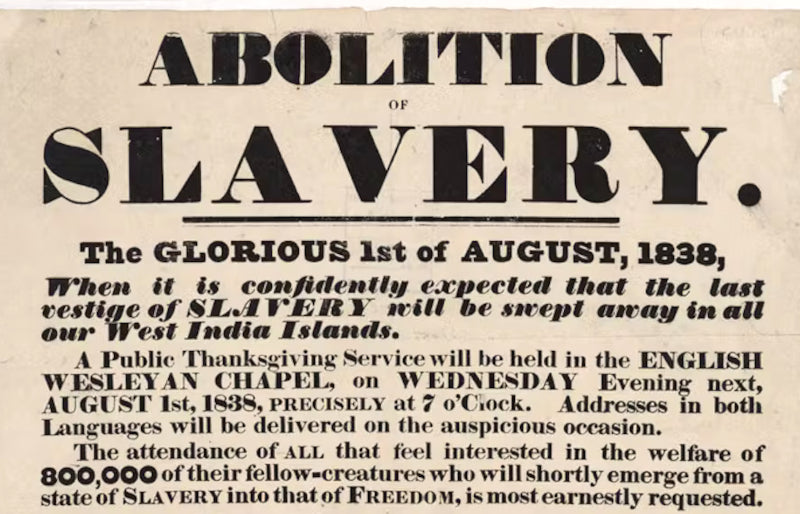 The abolition of Slavery in Jamaica in 1838 was celebrated throughout the British Empire.
The abolition of Slavery in Jamaica in 1838 was celebrated throughout the British Empire.
After almost 250 years of rebellion and resistance, it was a major turning point for a nation built on sugar plantations.
And in 1921 the government planned to celebrate the historic moment with this commemorative stamp.
It was part of the Jamaica 1919 - 1921 Pictorals series, which featured imagery and landmarks from the island's colonial history.
The 6d design depicted the historic moment in the main square of Spanish Town, as Governor Sir Lionel Smith read the “Declaration of the Abolition of Slavery”.
It was based on a lithograph of the scene by English artist Thomas Picken, published in 1838.
The stamps were beautifully printed by De La Rue of London, and shipped out for issue in June 1921.
In total, an estimated 416,000 stamps were sent to Jamaica in three shipments. But the timing couldn't have been worse...
A fiery fate awaits.
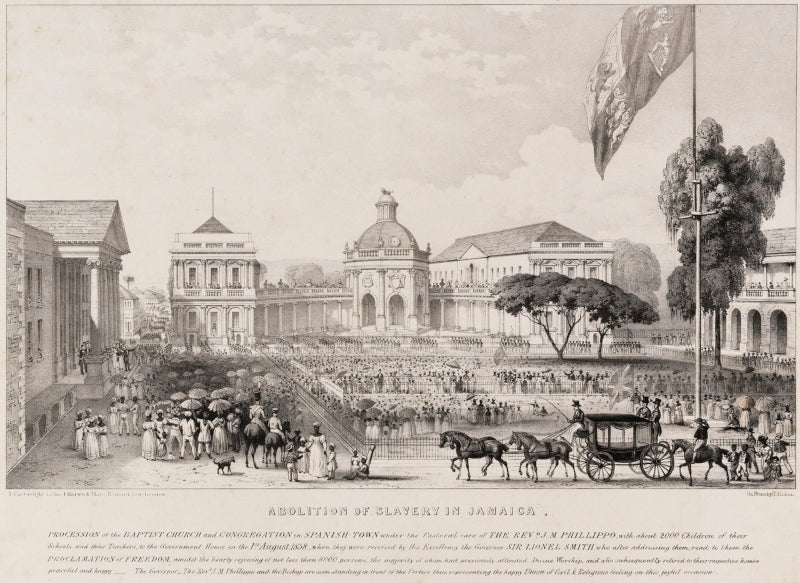 The original 1838 lithograph from which the 1921 stamp design was taken.
The original 1838 lithograph from which the 1921 stamp design was taken.
Falling sugar prices had a devastating effect on impoverished plantation and dock workers, most of whom were black.
The subject of slavery and its implications was deemed too controversial. So the Governor Sir Leslie Probyn ordered the stamps to be destroyed.
In a letter to The Jamaica Philatelist in June 1928, society treasurer G.C Gunter recalls their fate:
“It has been said that when the stamp arrived in Jamaica someone succeeded in persuading the then Governor that it would be unwise to issue a stamp recalling days of slavery.
"But inasmuch as Emancipation of the slaves was a subject which did honour to those who gave as well as those who received, it is a little difficult to see why this incident should be taboo in the history of the Island.
“The stamps were burnt, not by the common hangman but by a furnace in the General Penitentiary, but some of them seem to have escaped the flames, as I have seen at least one stamp without the word 'Specimen'.”
The controversy continued even after the stamps were destroyed.
Gunter stated that at least one London dealer had advertised specimen examples as Jamaica 6d "Slave Market" stamps, believing them to depict the sale of slaves rather than their emancipation.
Whatever the true reason for banning them, and the confusion that surrounded them, one thing is clear.
The Jamaica 6d 'Abolition of Slavery' stamp in any form is important, exceptionally rare and highly collectible.
It is recorded that just two original blocks of four were preserved, along with 400 'Specimen' overprints issued by the UPU.
One of these blocks was presented to King George V, and remains part of the Royal Philatelic Collection to this day.
The other entered the Postal Collection in Kingston. But that block later mysteriously vanished, and resurfaced on the market as four single stamps.
It seems Gunter encountered one of these back in 1927. And even then, just seven years after they were printed, they were already considered important rarities.
Almost a century later, those four surviving stamps with the watermark sideways have an SG catalogue value of £38,000.
(That value was established in 2007, when one of the four achieved the price at auction in London - more than doubling its high estimate, and far exceeding the previous catalogue price of £25,000.)
A strong vibrant market.
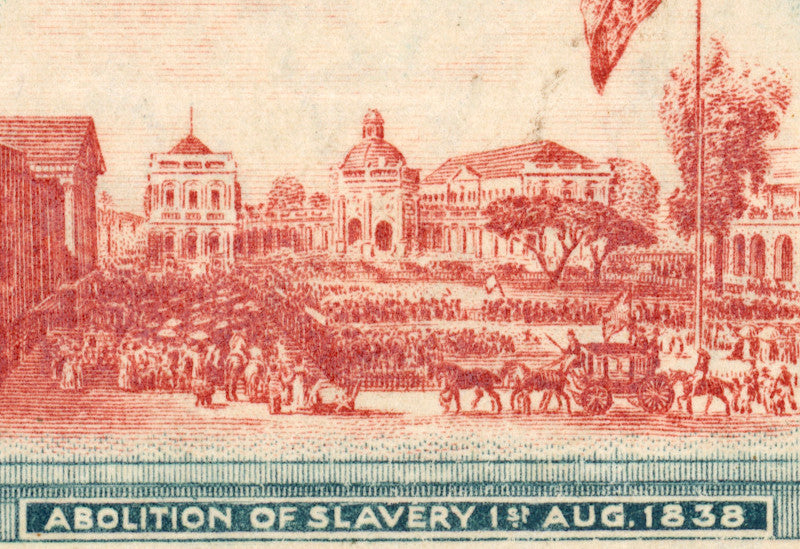 There isn't a finer proof copy of this stamp in existence. And it could be yours.
There isn't a finer proof copy of this stamp in existence. And it could be yours.
Thankfully the three existing examples were kept safely away from the flames, locked away in the De La Rue archives in London.
And the quality of De La Rue's printing means today they offer the finest possible version of this miniature work of art.
It's a significant moment in the nation's history, captured in beautiful detail.
And it reminds us that Jamaica offers a long, rich postal history for study, in itself and as part of the wider British Commonwealth.
It's also hugely popular with collectors, with a strong vibrant market, and has been for over a century.
During my research I found this report from the first auction dedicated to Jamaica stamps, held in London in 1933 - and I'd suggest it still rings true.
“That there is now a 'market' for 'Jamaica' is beyond question, for although the sale was held when the stamp market was feeling the depressed condition of trade, the splendid prices realised indicate that dealers as well as collectors can appreciate the good things in philately and will not lose the opportunity of securing them even at enhanced values.”
This proof is certainly one of those "good things in philately".
And one that I'm certain you'll appreciate.
It's been a joy to research its history, and delve into the antique pages of The Jamaica Philatelist.
(If you're interested, you can find old issues online here.)
And after admiring it for myself, it's a pleasure to offer it to you now.
Own this superb item today.
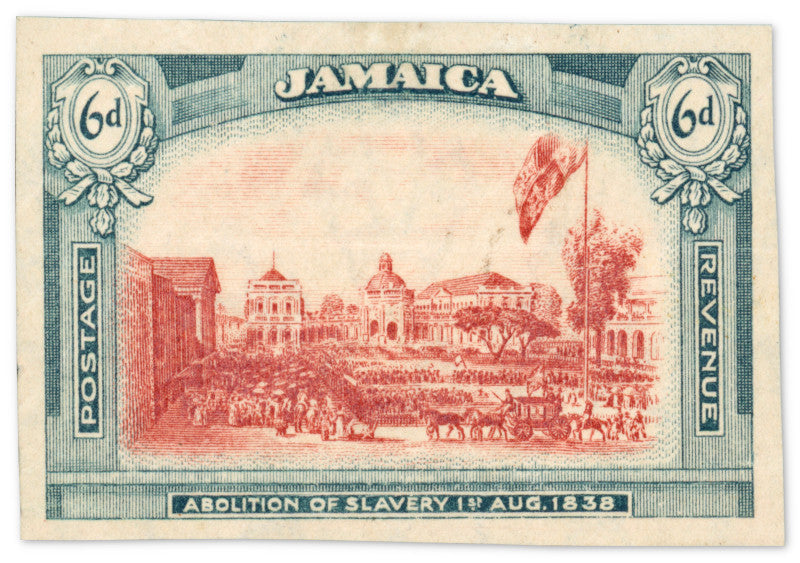 Banned and burned before it was officially issued - which makes it even more collectible today.
Banned and burned before it was officially issued - which makes it even more collectible today.
Owning this famous piece will bring a great deal to your collection.
- It's one of the key items of Jamaican philately.
- It's incredibly rare - one of just three known proofs.
- It's the finest example in the world.
- And it comes with a rich, interesting history.
It's also an original proof from the esteemed De La Rue archives, which makes it even more desirable for collectors.
Remember: it really should be impossible to own this stamp. The Jamaican government of the time wanted all traces of it destroyed.
That's why the four original surviving stamps available to collectors are valued at £38,000 each.
And yet despite being even rarer, you can own this original proof for a mere fraction of that price.
You can purchase it today for just £6,950.
And you'll have the satisfaction of knowing you own the best example in the world.
To place your order you can contact me directly:
- Call me on +44 (0) 1534 639 998.
- Or email me at info@paulfrasercollectibles.com.
Purchase this item now
A final word before I go.
This item comes with our Lifetime Guarantee of Authenticity, so you can add it to your collection with complete peace of mind for the future.
It's also covered with our 28-day money back guarantee if you change your mind for any reason.
And delivery is free and fully insured.
Jamaican stamps are a vital part of any British Commonwealth collection.
The nation has an incredibly long and rich postal history.
(It was the very first British colony to open its own Post Office in October 1671.)
And hopefully this piece, and the story behind it, will inspire you to explore it further. If so, have fun!
Thanks for reading.
Until next time,
Owen.
Paul Fraser Collectibles.
Are you following us on social media? Find us here:
Facebook | Twitter | Instagram | Pinterest | Youtube






